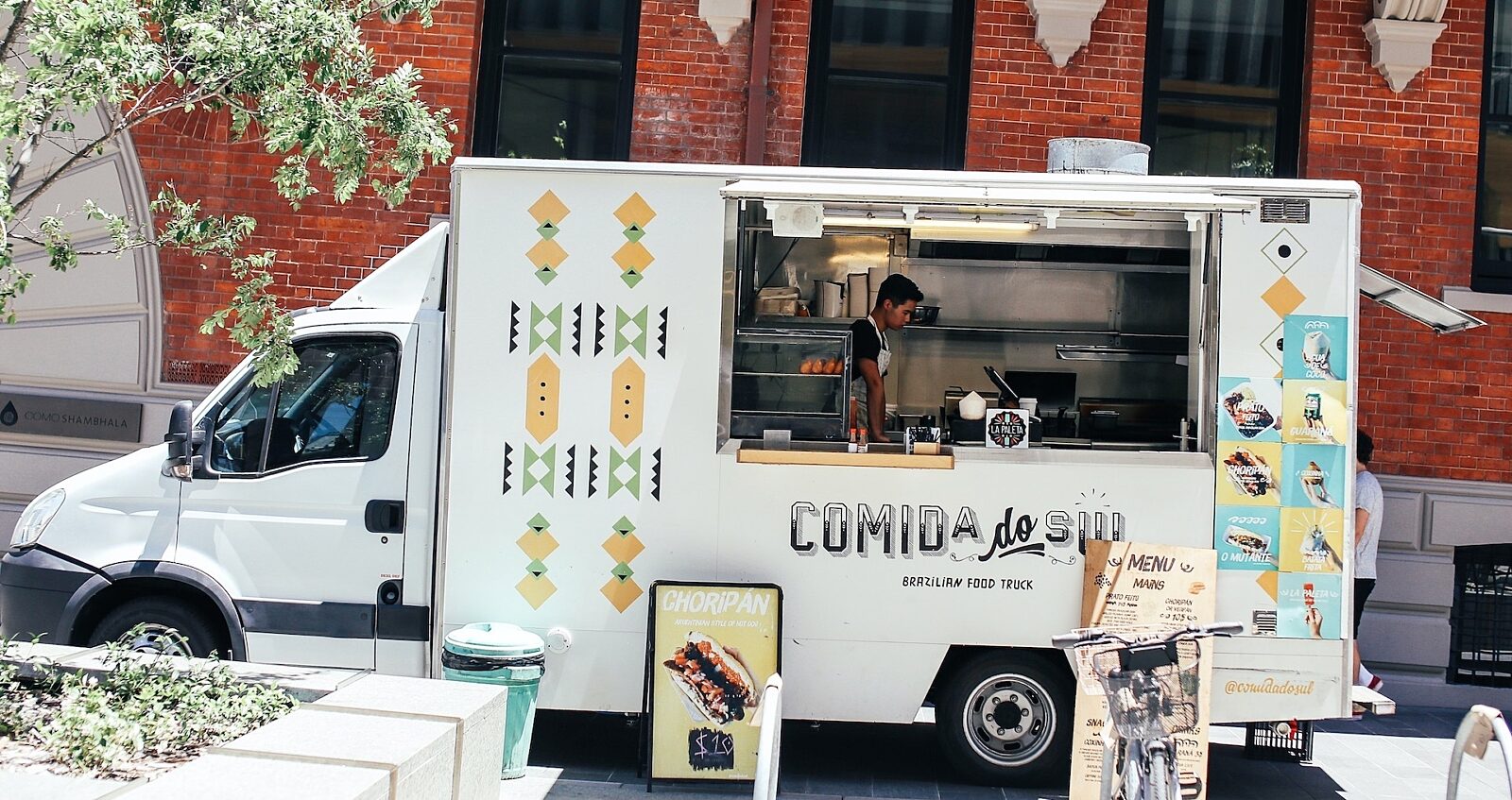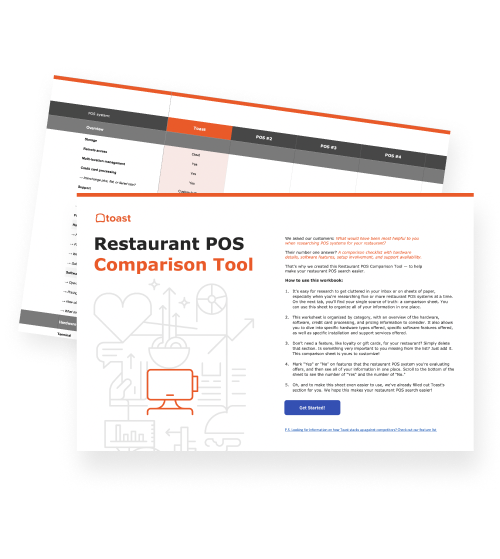
How Much Do Food Trucks Make in Vancouver?
Food trucks can make up to $500,000 a year, but how much would yours make? Calculate (and maximise!) your food truck’s revenue potential.
Tyler MartinezAuthor


Restaurant POS Comparison Tool
A free, customizable Restaurant POS Comparison Tool to research and compare point of sale systems in one Excel spreadsheet or editable PDF.
Get free downloadHow Much Do Food Trucks Make? (Food Truck Profit Margin)
Food trucks in Vancouver can bring in anywhere from $150,000 to $250,000 each year, translating to monthly earnings of $12,500 to $20,800. We’ve made this guide to help you figure out how much your food truck could make, including your profit margin potential.
Throughout the article, you’ll also uncover some strategies for maximising your food business’s income.
Restaurant Profit and Loss Statement Template
Evaluate your restaurant's financial strengths and weaknesses with the free P&L and income statement template.

Costs to Start a Food Truck
While food trucks do offer flexibility, the costs upfront can vary a lot, typically between $40,000 and $200,000. It's so important to include everything in your estimates, including labour, supplies, insurance, and marketing, just like you would if starting a traditional restaurant.
On top of that, there are costs unique to food trucks (as unique as your zany food truck idea). These include purchasing the truck, getting licences and permits, and picking up the right equipment for your mobile kitchen. Depending on your setup, you might need to budget for renting a commercial kitchen and securing parking permits, too.
Are Food Trucks Profitable?
Startup costs for everything, equipment, the truck, kitchen space, and licences, make the first year of business especially important – and costly. On top of all the upfront expenses, you’ll want to be able to cover off all the monthly expenses of your first year of operation. With that in mind, consider the financing needs of your first year of business carefully.
It’s wise to have contingency funds that cover you for your first 12 months until your business becomes profitable. So, consider liquid assets in the form of a personal loan or savings to pay for staff and unforeseen expenses. Even the best food trucks aren’t immune to Murphy’s law.
- Startup - $40,000- $200,000
- Equipment - $40,000-$200,000
- Permits/licences - $1000-$2000
- Contingency Funds - $20,000-$250,000
Average Food Truck Costs
Once your food truck business starts turning a profit, your monthly operating expenses will typically amount to 85-90% of your monthly sales. During your initial year or longer, you may find yourself continuously investing to compensate for losses in labour, food expenses, or marketing efforts. While serving up excellent food and service is your business’s key ingredient, having well-thought-out financial plans is essential for the long-term success of your food truck hustle.
- Operating Costs $13,000 - $65,000
- Commercial Kitchen - $1,500/month
- Parking - $500-$1,000/month
- Insurance - $500-$8,000/month
- Utilities - $1,000-$1,200/month
- Marketing - $500- $5,000 (3-6%) of sales
- Food Costs $5,000-$25,000 (30-35% of sales)
- Labour $2,500-$25,000 (24-40% of sales)
- Loan Repayment
Forecasting Your Food Truck’s Sales
Take a look at sales data, including labour, food expenses, inventory levels, and capacity, to forecast the sales of your food truck accurately. Keep in mind, though, that without historical sales records, predicting your restaurant's growth on a monthly basis during the initial year can be tricky. Take into account variables such as seasonal fluctuations in your locality, the effectiveness of your marketing efforts, and other key performance indicators (KPIs).
Start by working out your daily capacity. For a food truck, this means assessing how many customers you can realistically serve – the quantity of kebabs and salads you and your team can prepare and serve during a shift. Then, by considering the food costs and profits associated with those items, you can estimate your potential earnings for each shift.
Keep in mind that you won't be operating at maximum capacity for every shift. With sales data from a month (or even a week), you can analyse the average sales from each of those periods using technology like the best mobile POS system for food trucks in Vancouver and use this data to calculate the average for each shift accordingly.
Average Food Truck Revenue
The average food truck revenue in Vancouver, representing total sales before deducting expenses, ranges from $10,000 to $20,000 monthly. By forecasting your sales, you can get a more precise figure for your food truck's earnings. To determine your food truck's average monthly revenue, add up your projected sales from each month, factoring in various key performance indicators (KPIs), and then divide that total by the number of months in your operating season.
Food Truck Profit Margin Per Month
In general, a restaurant’s profit margin is typically between 3%-5%, but some scrape by on 0% while others achieve as much as 15%. Calculate your profit margin with the following equation: monthly sales x profit margin = profit. If your food truck averages $40,000/month in sales, and the profit margin is 4%, the profit is $1,600.
Food Truck Owner’s Salary
Once your food truck business starts turning a profit, you can start thinking about your own salary. Across the country, food truck owners typically earn annual incomes ranging from $44,000 to $69,000. In general, you could expect your salary as an owner to be less than 50% of the overall profit.
In a smaller food truck operation, your salary might constitute a higher percentage of the profit, particularly if you're the key worker in the day-to-day operations. For instance, if you take on roles such as executive chef, accountant, and occasional line cook, you could allocate a larger portion of the profit to your salary compared to if you share the load with a bigger team.
As the owner, you'll face decisions regarding the allocation of your salary while reinvesting profits into business growth. The initial year can be challenging, but boosting your sales through effective marketing strategies and leveraging the right technology will set your food truck on the path to success.
Timeline for Breaking Even for Food Truck
For most food trucks, profitability typically occurs within the initial year and a half to two years, influenced by factors such as food expenses and the specific KPIs of your business and region.
It's crucial to strive for profitability before depleting your contingency funds and financing. Now that you've gained a comprehensive understanding of how to forecast your food truck's revenue, you can estimate the timeline for breaking even – the point where your business achieves its first profitable month, covering both startup and operational costs.
Consider whether you intend to participate in a local festival circuit or if your town experiences an influx of tourists each July. These KPIs can help you anticipate sales boosts. Then, calculate the sales threshold your truck needs to meet before all startup and operating expenses are covered. Refer to the example below as you conduct your analysis:
Chip's Chicken Truck of Vancouver starts with a loan of $350,000, with a repayment period of 5 years at 5.6% interest:
Equipment (including the Truck): $100,000
Permits & Licences: $1,000
Contingency Funds: $249,000
Chip's Chicken Truck saves on labour because Chip works a lot of the shifts himself in the first year and a half of business; however, his parking budget is high because he’s been putting in some long hours in many locations to get the business off the ground.
Commercial Kitchen Rental: $1,500
Parking: $900
Insurance: $2,200
Utilities: $1,000
Food Costs: $9,000
Labour: $3,000
Marketing: $1,500
Loan payment: $4,400
Total: $25,500
At $25,500, the annual cost of operating Chip's Chicken Truck is $306,600.
Chip's famous chicken sandwich, his top seller, brings in a profit of $6.75. Complementing the sandwich are side options of french fries, yielding a profit of $1.50, and red beans and rice, which yield $3.50 in profit. With the capacity to produce 150 chicken sandwiches per shift, Chip and his team can generate a profit of $1,012.50. If they opt to include fries with a third of the orders and red beans with another third, they can increase their revenue by $206.25 per shift. At maximum capacity, Chip's has the potential to earn $7,312.50 over a six-shift week.
Monthly Sales: $29,062
Operating Expenses: $25,500
Profit: $3,750
Profit Margin at 100% capacity: 8.8%
At an average of 50% capacity, Chip's Chicken Truck can potentially gross $143,403 annually (50% of the gross profit potential x 52 weeks), with monthly revenue of $11,950. That rises to $286,806 annually at 100% capacity.
- The startup costs of Chip's chicken sandwich truck were $451,000 and the monthly operating costs are $25,500. Chip's first year will cost $467,500.
- Chip's operates at 50% capacity for the first three months – $43,593
- Chip's had a great second quarter (it was a busy summer in Vancouver) and operated at 70-85% capacity for that quarter – about $65,398 in total revenue.
- They kept the momentum going past the peak of summer, operating at 60-70% capacity in quarter 3, earning an additional $56,607.90.
- Vancouver’s market does vary seasonally, so Chip's is back to 50-60% in quarter 4, and ends the year with $47,952.30 in revenue.
- Chip's earns $213,551.20 in revenue for the year.
- Luckily, Chip's contingency funds let him stay afloat this year, making up the $262,949 shortfall.
For Chip's food truck to turn a profit, it needs to operate at an average capacity of 87%. By laying the groundwork with effective marketing strategies and maintaining meticulous record-keeping, the business is expected to achieve profitability before the conclusion of its second year of operation.
Improving Your Food Truck’s Sales
You can implement specific strategies to enhance sales and speed up the path to profitability. It's crucial to accurately calculate food costs and provide training to employees to encourage upselling of your most profitable items. Consider structuring your menu to prominently feature these items to attract guests' attention. Additionally, scoring the right permits to park your truck at events and festivals can help you reach a broader customer base and introduce your brand to local communities.
In today's digital landscape, marketing your food truck through website and social media pages is essential. It's imperative to maintain an active online marketing strategy to ensure that your customers can easily locate your truck and stay engaged with your offerings.
The Right Tech
Leveraging the right technology in your food truck operation will help you boost your efficiency and profitability. Establish a strong foundation for success by incorporating inventory management, time-tracking, and financial software from the start. Investing in a comprehensive point of sale (POS) system that integrates all these functions simplifies operations. You’ll want to choose the right portable POS solution for your street food vendor business in Vancouver.
Plus, consider tech that’s convenient for the customer, like mobile order and pay. And when you are ready to expand your business, the right technology will keep you organised and on track for growth.
Related Resources
Is this article helpful?
DISCLAIMER: This information is provided for general informational purposes only, and publication does not constitute an endorsement. Toast does not warrant the accuracy or completeness of any information, text, graphics, links, or other items contained within this content. Toast does not guarantee you will achieve any specific results if you follow any advice herein. It may be advisable for you to consult with a professional such as a lawyer, accountant, or business advisor for advice specific to your situation.
Subscribe to On the Line
Sign up to get industry intel, advice, tools, and honest takes from real people tackling their restaurants’ greatest challenges.
